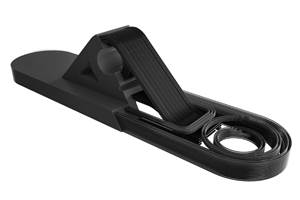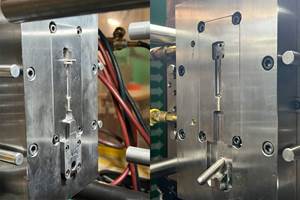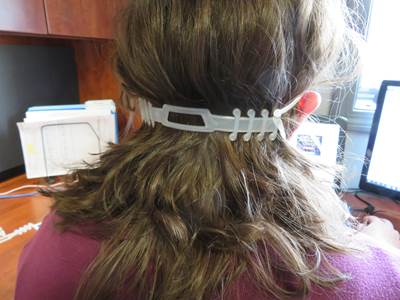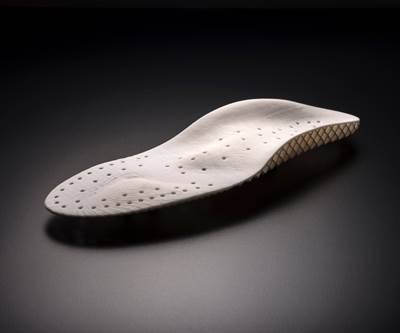Q&A: The Role of 3D Printing When it Comes to Optimizing the Supply Chain
Greg Elfering, president of Ultimaker Americas, discusses the current state of 3D printing and what the future holds.
Share
Greg Elfering is the newly named president of 3D printing provider Ultimaker Americas. He oversees the sales, marketing, production, distribution and support of Ultimakers products sold in the Americas. He has been in the 3D printing space for the past 16 years and has run sales and applications for 3D systems in the Americas and Europe.
I recently checked in with Greg to talk about the impact of COVID-19 on operations, adoption trends he’s seen in the space and the future of 3D printing in manufacturing.
With supply chains and processes disrupted due to the COVID-19 pandemic, can you talk about the role that 3D printing plays when it comes to optimizing the supply chain?
Additive manufacturing enables quicker turnaround times when it comes to product development, production downtime and inventory fulfillment, which can give companies a significant advantage against competitors. 3D printing also plays a large role in ramping up production at scale by allowing for customization and local production of end-use parts. Having the ability to cut timelines is crucial, especially amid the pandemic, but doing so while producing consistent and reliable parts and tools is often tricky. Today’s 3D printing technology allows companies to not only shift their approach to a local, distributed manufacturing model, but also enables management across multiple processes to ensure consistent and reliable production of parts or tools.
What types of adjustments and changes have your company made in response to the COVID-19 pandemic?
Ultimaker has connected 3D Printing Hubs, experts and designers with hospitals. Ultimaker has launched the following initiatives on https://ultimaker.com/covid-19
Connect and Print:
Hospitals that face acute shortages of critical parts and that have approved 3D print designs and material specifications already available can directly connect with 3D printing experts nearby to send their 3D print requests to be printed. Ultimaker makes in-house 3D printing capacity available as well. A continuously updated map shows which 3D printing hubs are available nearby.
Design, Check and Print:
If a hospital needs help designing parts and tools that run out and are now in limited supply, Ultimaker is making a team of highly motivated designers and application engineers available to support in designing and creating the desired part. This part is printed by the nearest 3D print hub and sent to the hospital as soon as possible. After testing and receiving approval of the hospital, the part is available for further 3D printed production.
3D printing can make a difference. We therefore invite all available 3D printing hubs equipped with Ultimaker 3D printers to make themselves visible through Ultimaker.com to accelerate the production of approved 3D printed parts, where they’re needed, when they’re needed. By unlocking the power of our network to support 3D print initiatives for hospitals worldwide, I am left humbled and honored to be able to contribute in this challenging situation.
Can you talk about some of the recent adoption trends you’ve seen in the space?
The pandemic has put the additive manufacturing industry in the limelight as many companies look to fill gaps in the supply chain and maintain production timelines. Ultimaker experienced notable growth in the first half of 2020; Ultimaker Americas alone saw 30% growth. We’re seeing a paradigm shift in the supply chain and manufacturing industry, and companies are increasingly aware of the benefits of incorporating additive manufacturing into their processes. Finding solutions that help cut time and costs and improve productivity is a priority for companies now more than ever, and Ultimaker’s recent momentum is testament to that.
What advice do you have for customers and other manufacturers as they navigate these uncharted waters?
Shifting away from the traditional hub manufacturing model and putting emphasis on a distributed, local approach will allow for more flexibility and reduced delays and costs, which is especially important as we near the final quarter of the year. Increasingly, I hear customers who have implemented this perspective explain how outsourcing costs have dropped significantly and parts and tools are finally available on time.
3D Printing is now used in industries and sectors including education, healthcare, aerospace, etc. It offers the following benefits:
- Cost-effective, speedy experimentation. Designs can quickly and easily be printed and tested. If required, further iterations can be created at affordable price points. This is especially useful for companies which want to make prototypes in-house.
- Tooling and End Use Parts. Businesses can rapidly print jigs, fixtures, and tools for their machines or vehicles. They can also customize them to suit their exact requirements.
- Showcasing ideas. Sometimes, 2D illustrations aren’t enough to convey complex concepts. 3D printing enables ideas to be viewed in three dimensions and explored in greater depth.
- Promoting better health. 3D printing can be used to create prosthetic limbs, assist dentists, print replacement knee and hip joints, and much more.
- Educating and exploring. Schools use 3D printers to encourage children to design, test, and refine design concepts. 3D models can be created to explain aspects of schools’ curricula.
- Making end-use products. 3D printers present new possibilities for retailers, designers, and more. Even metal products (such as jewelry) can be printed, and bespoke items made for customers.
What does the future hold for 3D printing?
While awareness and adoption of additive manufacturing has spiked in recent months, 3D printing will undoubtedly continue to evolve and improve. With innovation in materials, software and process-control technology, the additive manufacturing industry is poised for even more growth. As the technology becomes increasingly accessible, companies will continue to see the value in 3D printing by leveraging material partnerships, software offerings and cloud options for long-term business growth.
Here are a few predictions.
The future of 3D printing in manufacturing
Using 3D printing, companies like Gerhard Schubert GmbH are revolutionizing the ways in which they operate, creating "digital warehouses" of parts and tools that can be printed on-demand by both manufacturing organizations themselves, as well as their customers. Additionally, manufacturers can make use of an ever-growing stable of 3D printing materials, which enable the creation of parts that are heat and chemical-resistant, flame-retardant, ESD-safe, and more.
The future of 3D printing in healthcare
Some of the most exciting developments may well be in the healthcare sector. Prosthetics are likely to become even more mechanically viable, not to mention more aesthetically appealing. Bioprinting looks set to take off soon too – with scientists using 3D printers to create organs and other human tissue.
The future of 3D printing in the environment
Sustainability and eco-friendliness are becoming increasingly important. KLM Royal Dutch Airlines, for example, uses recycled plastic to create functional parts for engineering and maintenance uses. Other organizations are printing artificial coral to restore some of the world’s reefs.
The future of 3D printing in the automotive industry
Flexible filaments such as TPU enable automotive companies to create parts that behave like rubber. They also use 3D printing to swiftly create the tools they require for specific jobs. It seems likely that increasing numbers of manufacturers will create end-use parts too, such as Tucci Hot Rods.

Ultimaker’s S5 3 line of printers.
Related Content
Additive Fusion Technology Optimizes Composite Structures for Demanding Applications
9T Labs continues to enhance the efficiency of its technology, which produces composite parts with intentionally oriented fibers.
Read MoreCustom Molder Manages Growth on Several Fronts
Adding people, plants and machines, expanding capabilities in LSR, high-tonnage presses, automation and 3D printing—EVCO Plastics maintains momentum through challenging times.
Read More420 Stainless Steel Now Qualified With TrueShape 3D Printing Technology
NPE2024: Mantle's Additive Manufacturing Technology is Designed for Precision Tooling
Read More3D Printing of Injection Molds Flows in a New Direction
Hybrids of additive manufacturing and CNC machining can shorten tooling turnaround times.
Read MoreRead Next
Additive Manufacturing and Injection Molding Increasingly Complementary in Covid-19 Crisis
The coronavirus crisis has often simultaneously required the speed of additive manufacturing and the scale of injection molding.
Read MoreAdditive Manufacturing Continues Its Push Toward Production Floor
Suppliers unveil new material grades at K 2019 as 3D printing applications advance.
Read MorePeople 4.0 – How to Get Buy-In from Your Staff for Industry 4.0 Systems
Implementing a production monitoring system as the foundation of a ‘smart factory’ is about integrating people with new technology as much as it is about integrating machines and computers. Here are tips from a company that has gone through the process.
Read More

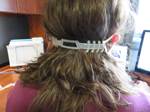
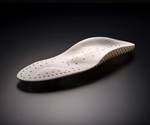

















.png;maxWidth=300;quality=90)


